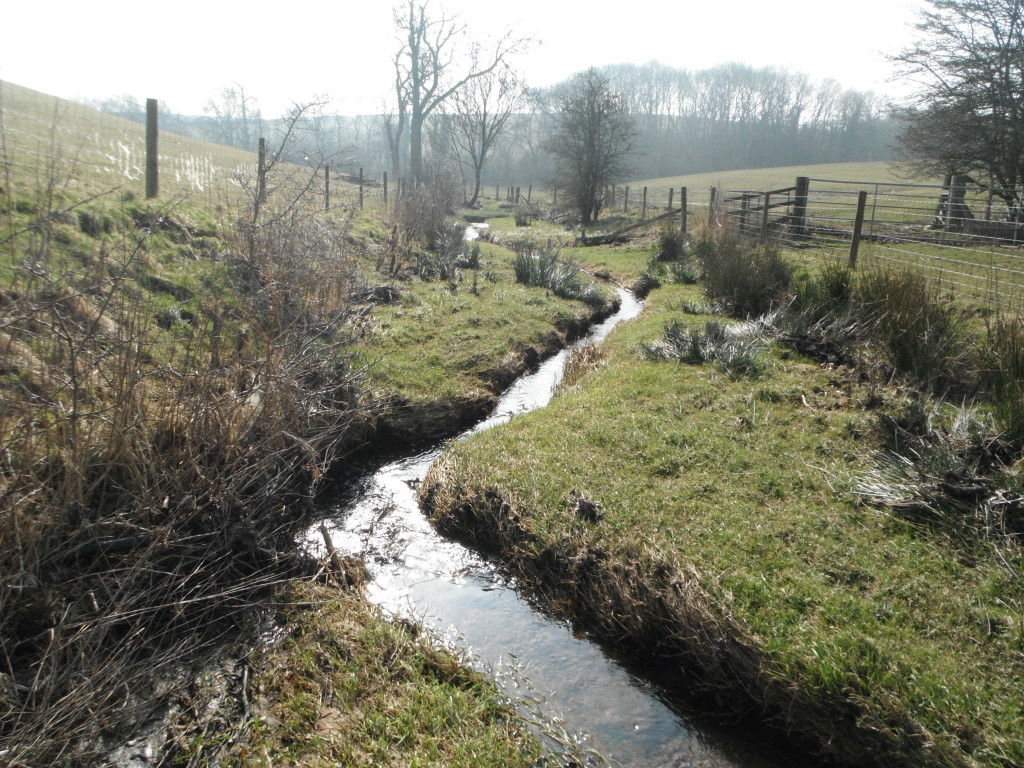Why we’re still not very keen on river restoration
27th October 2015
In our strategy, ‘What we want to achieve’ we describe what we are working towards over the next five years. We talk about the kind of things we do, and about what we don’t do. And there, on page 15, under things we don’t do – river restoration.
Here’s why: we don’t like doing things where there is not much evidence of benefits for biodiversity.
This can put us at odds with other people and organisations. Evidence isn’t always popular or convenient, especially if it challenges the things we hold dear.
We all feel the drive to do something for our rivers. We hear time and again of the poor state they are in, despite the resources we pour into them. Only 17% of England’s monitored river sections are in good condition, pollution is all pervasive and in England, at least, river quality seems to have declined in the last few years though it’s hard to say whether this is because rivers have really got worse or because ‘the more monitoring is done the more problems are likely to be found’. There are similar reports of the highest quality rivers in Wales and Scotland declining in quality too.
It is natural that many of us want to try to reverse the damage and there has been steady growth in the river restoration movement over the last 20 years. And we’ve been part of this: our work in the 1990s on the River Cole in Oxfordshire and the River Skerne in Darlington led directly to the foundation of the UK River Restoration Centre.
However, the effectiveness of river restoration measures remains contentious, and the benefits for freshwater wildlife are far from clear. Last year, American researchers published a major review of river restoration schemes, and concluded that ‘…outcomes of river restoration so far may be disappointing’ but ‘the science is still young’ (the journal is behind a paywall but you can get a copy of the paper by emailing the main author).
A more recent analysis of existing monitoring studies (by Jochem Kail and team in the journal Ecological Indicators tells us more. The team reanalysed as many of the well-monitored restoration schemes as they could and concluded that, overall, two thirds of schemes had some positive effects, with one third having no benefits at all or making things worse. The strongest effects were found for wetland plants, especially for projects that involve widening, re-braiding or re-meandering streams, perhaps reflecting the fact that such schemes create a lot of disturbed ground, favouring pioneer species which may subsequently disappear unless the redesigned river can maintain this disturbance. Unsurprisingly, fish and invertebrates benefited more clearly from in-stream measures rather than large scale re-meandering or re-braiding schemes.
Perhaps the most important conclusion was that ‘restoration resulted in a higher number of individuals but few new species.’ In general, it is easier to increase the number of individuals in the restored reach than to increase diversity or bring back lost species. Although once said this may seem obvious, it has important implications for endangered species which are often widely scattered at isolated sites around the country. It suggests that it is vital to target restoration work very carefully if we are trying to encourage the return of lost species – the aim of much river restoration work. This is backed up by another recent study which shows that if species are to re-colonise a restored river they must be close by, ideally within about 1 km. This study found that the design and techniques used in a restoration scheme had minor influences on success, and were completely outweighed by which species were nearby and whether they were able to disperse to the site.
The bottom line seems to be that restoration may help boost locally struggling populations of species still present in the river, but you should work as close as possible to existing populations of the species you are interested in. As an example, recent work by the Eden Rivers Trust on the River Lyvennet in Cumbria, a damaged salmon spawning stream, seems to fit this pattern. Less than a year after a restoration project was completed in which a straightened channel created for land drainage was re-routed to a former natural course, Salmon have been seen spawning in the restored section. The fish were easily able to colonise as they simply had to swim into the new section. At sites constrained by water quality, or where species have been completely lost from the area – a problem facing many sites – simply restoring the channel is not likely to achieve success quickly.
Of course we’re not giving up on rivers and streams. But we don’t advocate river restoration projects that simply focus on re-meandering the channel in the lower reaches of rivers. And we’re very chary of projects that push dirty river water onto floodplains, damaging any remaining clean water habitats on those floodplains.
We will, however, work to protect the best of our precious remaining high quality streams and rivers, especially by protecting unpolluted headwater steams and then working down the catchment. And we are actively involved in projects to protect endangered river and stream species that are hanging on, often in tiny populations, and desperately need a helping hand if they are not simply to disappear into history.
What next?
- Read our strategy – what we want to achieve in the next five years
- Support our work researching freshwater issues, advocating for effective conservation measures and protecting freshwater wildlife
- Join our mailing list to get articles like this direct to your inbox

